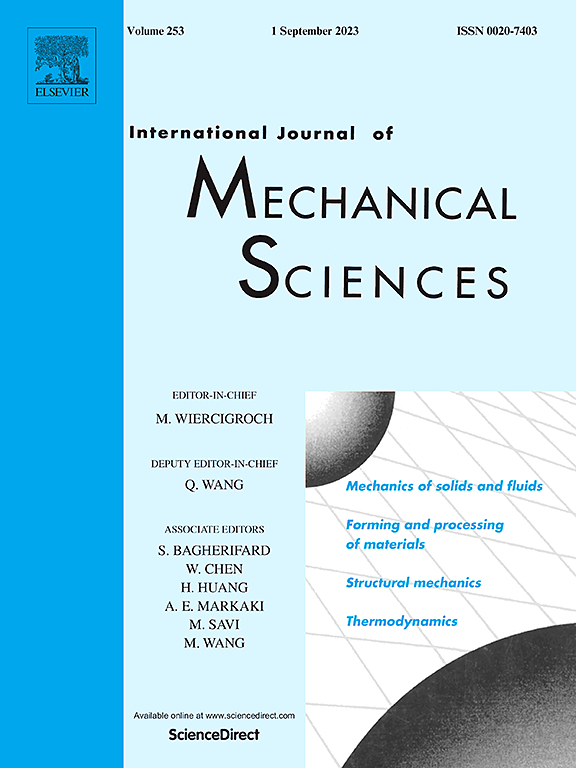Synergistic interaction of thixotropy and inertia in a C-shaped serpentine channel
IF 7.1
1区 工程技术
Q1 ENGINEERING, MECHANICAL
International Journal of Mechanical Sciences
Pub Date : 2025-02-20
DOI:10.1016/j.ijmecsci.2025.110068
引用次数: 0
Abstract
Thixotropy, a property commonly observed in industrial fluids, significantly influences flow and mixing behavior in micromixers. However, its interaction with fluid inertia remains poorly explored. This study examines the behavior of a thixotropic fluid in a C-shaped serpentine channel, focusing on the complex and poorly understood interaction between thixotropy and inertia. A structure-kinetics model is employed to capture the microstructural changes of the thixotropic fluid. We numerically analyze flow and mixing behavior influenced by the Reynolds and the thixotropy numbers, solving coupled continuity, momentum, and structure evolution equations. Thixotropy has a minimal impact on mixing in the creeping flow regime. In the non-creeping flow regime, however, it enhances rotational flow and mixing by reducing viscosity through structural breakdown and increasing fluid inertia. Our findings demonstrate that in the serpentine channel geometry, thixotropy can enhance mixing performance in shorter channels and with lower energy consumption by interacting synergistically with fluid inertia. This highlights the critical role of rheological properties in the design and operation of micro- and macro-scale mixers, with potential applications in biotechnology, pharmaceuticals, food processing, and manufacturing processes involving thixotropic materials.

求助全文
约1分钟内获得全文
求助全文
来源期刊

International Journal of Mechanical Sciences
工程技术-工程:机械
CiteScore
12.80
自引率
17.80%
发文量
769
审稿时长
19 days
期刊介绍:
The International Journal of Mechanical Sciences (IJMS) serves as a global platform for the publication and dissemination of original research that contributes to a deeper scientific understanding of the fundamental disciplines within mechanical, civil, and material engineering.
The primary focus of IJMS is to showcase innovative and ground-breaking work that utilizes analytical and computational modeling techniques, such as Finite Element Method (FEM), Boundary Element Method (BEM), and mesh-free methods, among others. These modeling methods are applied to diverse fields including rigid-body mechanics (e.g., dynamics, vibration, stability), structural mechanics, metal forming, advanced materials (e.g., metals, composites, cellular, smart) behavior and applications, impact mechanics, strain localization, and other nonlinear effects (e.g., large deflections, plasticity, fracture).
Additionally, IJMS covers the realms of fluid mechanics (both external and internal flows), tribology, thermodynamics, and materials processing. These subjects collectively form the core of the journal's content.
In summary, IJMS provides a prestigious platform for researchers to present their original contributions, shedding light on analytical and computational modeling methods in various areas of mechanical engineering, as well as exploring the behavior and application of advanced materials, fluid mechanics, thermodynamics, and materials processing.
 求助内容:
求助内容: 应助结果提醒方式:
应助结果提醒方式:


